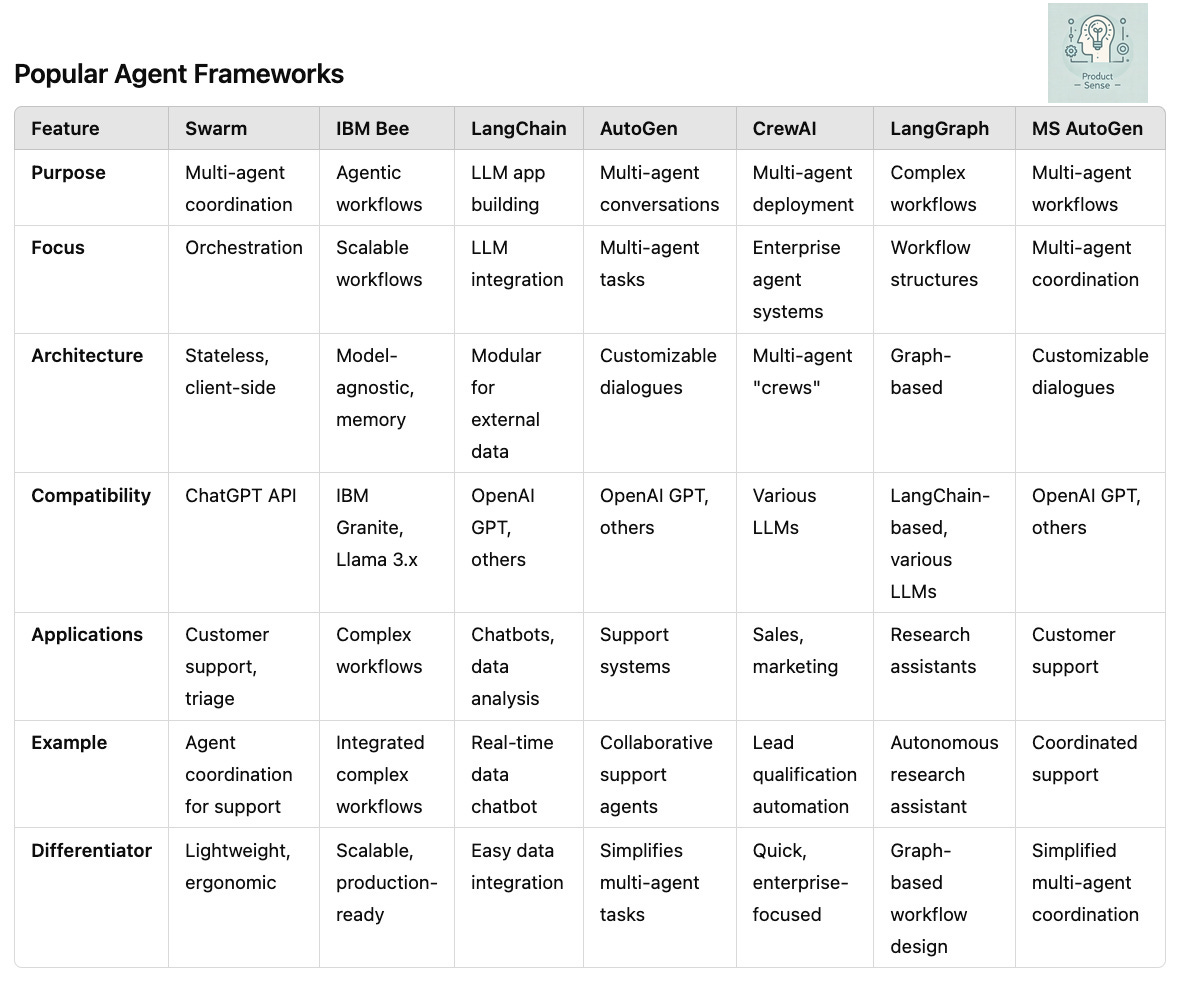Enterprise LLM Agents on 2025 Gartner's Top10
A Product Leader's Guide to Development, User Research and Continuous Improvement for Vertical LLM Agents
Vertical LLM agents or Agentic AI tops the Gartner's list of top 10 tech trends for 2025. It is essentially the application of LLMs agents beyond query-and-response generative chatbots to do enterprise-related tasks.
Salesforce Agentforce platform is a great example of platform that empowers businesses to deploy customizable, autonomous vertical LLM agents tailored for specific industries and functions, integrating seamlessly with enterprise data and leveraging low-code tools to simplify development and enhance operational efficiency.
As a product manager developing and deploying vertical LLM (Large Language Model) agents for specialized knowledge task, your approach needs to focus on combining tailored functionality with a user-centric development and deployment strategy. Here’s a framework to guide the creation, deployment, and scaling of vertical LLM agents integrating user research, acquisition, and product optimization:
1. What are Vertical LLM Agents
Vertical LLM agents are industry-specific customized autonomous AI solutions that enhance precision, efficiency, and user experience by being trained on domain-specific data and tasks. Unlike general-purpose LLMs, vertical LLM agents focus on the unique requirements of sectors such as healthcare, finance, education, and legal. Their tailored functionality enables them to understand specific jargon, nuances, and workflows, making them more suited and precise for tasks like customer support, data analysis, and content generation in a targeted industry.
2. Key Characteristics of Vertical LLM Agents
Domain Specialization: Training on industry-specific datasets (e.g., medical records for healthcare, legal documents for law) allows these agents to interpret specialized vocabulary, contextual details, and compliance needs.
Enhanced Accuracy: By narrowing their scope, vertical LLM agents achieve higher precision, which is essential for specialized tasks such as diagnosing patient symptoms in healthcare or analyzing market trends in finance.
User-Centric Design: Vertical LLM agents are tailored to meet the needs of the end-users within a particular industry, ensuring that functionality aligns with their expectations and workflows.
3. Development Approach
The development of a vertical LLM agent includes the following steps:
Data Collection: Start by gathering high-quality, domain-specific datasets, such as industry reports, user interactions, and technical documentation. These will form the foundation of the LLM’s knowledge, so accuracy and relevance are essential.
Fine-Tuning and Model Training: Fine-tune the base LLM using the collected data, adjusting it to handle domain-specific terms and scenarios. This fine-tuning helps the model deliver high-quality responses that align with the vertical’s needs, whether it’s diagnosing medical conditions, generating financial insights, or assisting with legal research.
Iterative Testing and Feedback Loops: Build a feedback mechanism where users can rate responses, report inaccuracies, or suggest improvements. This continuous feedback enables the model to evolve, becoming more accurate and user-friendly over time.
Compliance and Ethical Oversight: Incorporate robust compliance controls and guardrails, particularly in regulated industries like healthcare and finance, to ensure that the LLM adheres to privacy and ethical standards.
4. Illustrative applications of Vertical LLM Agents in Different Industry Domains
Healthcare: Vertical LLMs can assist with patient communication, support diagnostics, and generate research insights based on medical literature, improving both patient and provider experiences.
Finance: In finance, LLM agents can automate research and market insights, and generate ideas for asset allocation, and generate risk management reports, streamlining investment management operations.
Education: Vertical LLMs can offer personalized tutoring, content generation, and grading assistance, enhancing educational experiences for both students and educators.
Legal: LLMs in legal settings can assist with document review, summarize legal precedents, and support client communications, reducing the workload on legal professionals.
5. User-Centric Approach for building Vertical LLM Agents
Persona Development: Identify key personas within each vertical (e.g., healthcare providers, finance analysts, legal associates) to understand their unique challenges and goals.
User Journey Mapping: Map out the user journeys for each persona to find where the LLM agent can provide the most value, such as aiding in complex data analysis or streamlining routine tasks.
Prototype Testing: Create a minimum viable product (MVP) and run tests with a select group of end-users in each industry. Collect qualitative feedback to refine user interactions and ensure the LLM aligns with user needs.
6. Optimizing Vertical LLM Agents for Continuous Improvement
Monitor Key Performance Indicators (KPIs): Set KPIs based on the LLM’s performance in each vertical, such as user satisfaction scores, task completion rates, or time saved on repetitive tasks.
Incorporate Feedback: Use the feedback loops to fine-tune the LLM’s responses and update the model periodically with new data to ensure continued relevance and accuracy.
Oversight and Monitoring: Regularly audit the LLM’s outputs against regulatory requirements or privacy standards as needed.
7. Long-Term Value and Impact of Vertical LLM Agents
Deploying vertical LLM agents as a SaaS product allows for scalable, subscription-based solutions that organizations can tailor to their unique industry needs. This model creates value by reducing operational costs, enhancing user experience, and increasing productivity for knowledge-based industries. As more organizations adopt AI in specialized domains, vertical LLM agents are well-positioned to drive innovation, efficiency, and domain-specific intelligence in ways that general-purpose AI cannot.



